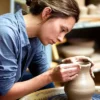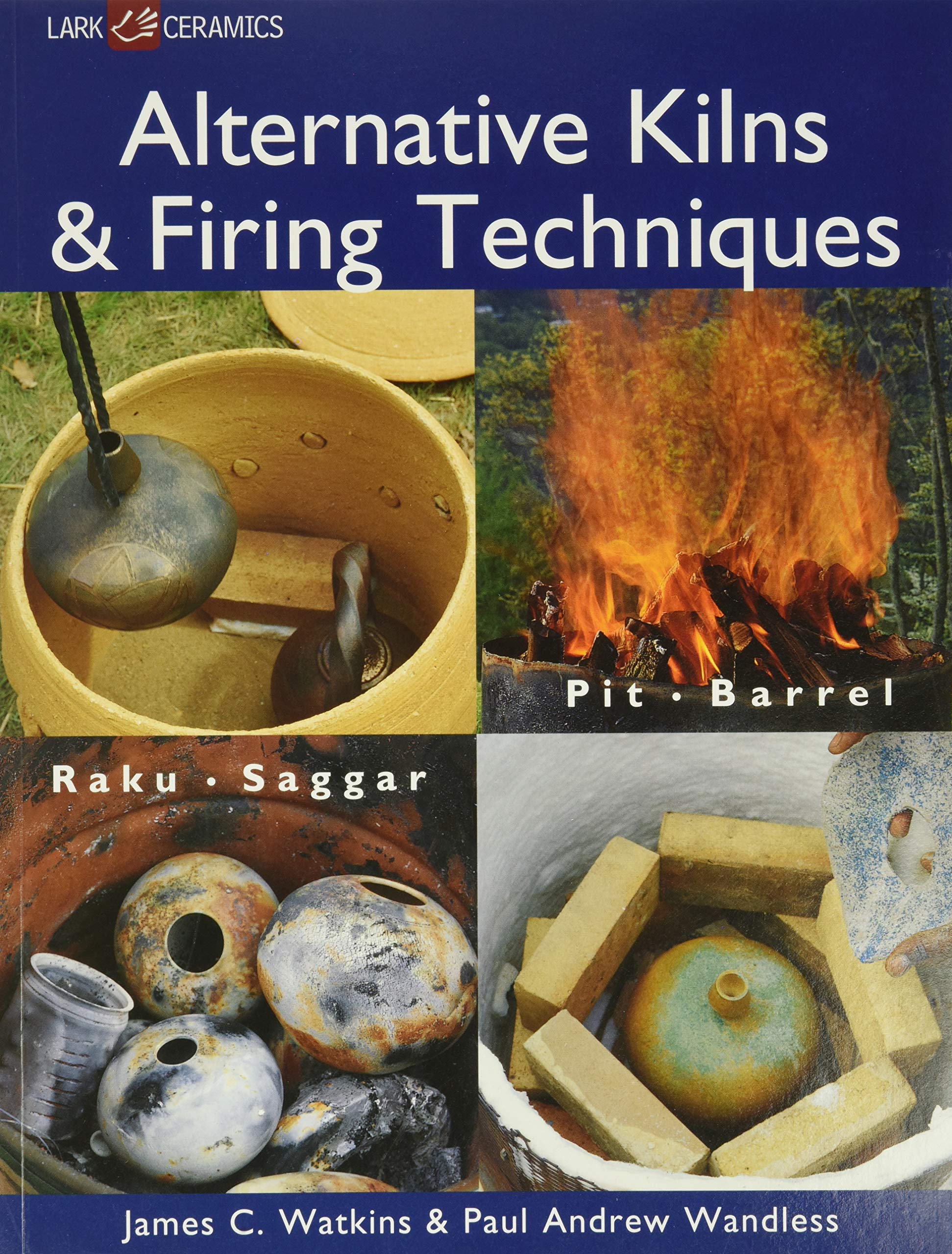Raku pottery offers a unique approach to ceramics and has a rich history rooted in Japanese culture.
Its distinctive characteristics, such as the rapid firing process and dramatic color contrasts, make it a fascinating subject for those interested in ceramics.
The technique has evolved over centuries, bringing together traditional practices and modern artistic expressions that continue to captivate pottery enthusiasts.
For anyone embarking on a journey to master Raku pottery, selecting the right resources is crucial.
Books on this topic offer valuable insights into the unique firing techniques, glaze applications, and artistic philosophies behind the craft.
When choosing a Raku pottery book, consider factors like the author’s experience, clarity of instruction, inclusion of visual aids, and coverage of both historical context and practical techniques.
We pored over numerous Raku pottery books to identify those that are most informative and user-friendly, helping both beginners and seasoned potters expand their skills and hone their craft.
Best Raku Pottery Books
We’ve curated a list of the best Raku pottery books that will inspire and guide both beginners and seasoned artists.
These selections showcase techniques, history, and innovations in the art of Raku pottery.
Explore these insightful reads to enhance your craft and knowledge.
Mastering Kilns and Firing: Raku Techniques
A fantastic addition to any pottery enthusiast’s library, providing detailed insights into alternative firing methods and crafting techniques.
- Comprehensive knowledge on firing methods
- Detailed, high-quality photographs
- Personal insights from experienced artisans
- Some sections may heavily focus on kiln types
- Might be complex for beginners
- Lacks extensive glaze recipes
With “Mastering Kilns and Firing: Raku Techniques,” our appreciation for ceramic firing methods expanded significantly.
This book is an impressive resource, especially if you’re interested in diversifying your firing techniques beyond the standard methods.
The clear instructions and valuable visuals offer a well-rounded guide that fits seamlessly into any pottery collection.
Our experience with this book has been nothing short of enlightening.
The author’s personal insights into various firing methods bring a depth of knowledge that can inspire both seasoned and aspiring potters.
Whether planning to build a wood-fired kiln or exploring barrel firing, the step-by-step guidance makes complex techniques feel attainable.
We were particularly drawn to the beautiful photos accompanying the text, which add an extra layer of understanding.
For anyone serious about mastering different kiln building and firing techniques, this book proves to be an invaluable asset.
Alternative Kilns & Firing Techniques
This book is a valuable resource for those keen on mastering unique pottery firing techniques, making it a worthwhile addition to any ceramic enthusiast’s collection.
- Clear instructions and ample visual aids
- Practical advice for creating alternative kilns
- Comprehensive coverage of various firing methods
- Not ideal for complete beginners
- May require supplementary resources
- Some techniques might need specific tools
Exploring the contents of “Alternative Kilns & Firing Techniques” gave us a fresh perspective on the possibilities of pottery.
It stands out with its clear instructions complemented by step-by-step photos, making the techniques accessible and easy to follow.
We found the visual aids particularly helpful in grasping complex concepts.
The book dives into building alternative kilns, which is a breath of fresh air for potters who might lack access to traditional equipment.
By offering practical advice, it empowers us to experiment and expand our skills in new directions.
It truly opens up a world of possibilities and shows how to achieve stunning results with minimal resources.
While its wealth of information is commendable, it might feel overwhelming for those entirely new to pottery.
The book assumes a foundational knowledge of ceramics, which could necessitate additional learning materials.
Using the techniques also sometimes requires specific tools, nudging us to plan accordingly to fully benefit from the content.
Mastering the Potter’s Wheel
An excellent guide for both beginners and seasoned potters looking to refine their wheel-throwing skills with clear instruction and vibrant photographs.
- Detailed step-by-step instructions
- High-quality photographs that illustrate techniques
- Suitable for all skill levels
- Limited to techniques for wheel throwing
- Hardcover can be a bit bulky for some
- Some users may prefer more advanced content
Diving into “Mastering the Potter’s Wheel,” we immediately notice the book’s appeal in its clear layout paired with illustrative photography.
The combination of written guidance and visual aids is helpful, making techniques more accessible to potters of various experience levels.
The book is particularly engaging because of the thoroughness in the exercises provided.
We found that beginners can easily follow along, while more experienced potters might discover new ways to enhance their existing skills.
The author, Ben Carter, has done an excellent job in breaking down complex processes into manageable steps, which is not only insightful but also keeps us motivated.
While it’s a great resource on wheel techniques specifically, those looking for broader pottery techniques beyond the wheel might find the focus narrow.
Nonetheless, anyone interested in mastering the pottery wheel will benefit from the extensive insights and tips offered here.
Fired Up With Raku: Over 300 Raku Recipes
A worthwhile addition to any ceramic enthusiast’s library for its extensive glaze recipes and artistic insights.
- Offers a diverse collection of over 300 glaze recipes.
- Includes in-depth interviews with leading Raku artists.
- Provides valuable information for both beginners and experienced potters.
- Some glaze recipes contain outdated ingredients like lead.
- Limited availability of materials mentioned in the book in some regions.
- Not all glaze results are accompanied by pictures.
Let’s begin with what impressed us most about “Fired Up With Raku: Over 300 Raku Recipes”.
This book is brimming with an incredible variety of glaze recipes, making it a practical and inspiring resource.
The extensive collection covers a broad range of effects and finishes, allowing us to experiment and explore new creative avenues.
The interviews with renowned Raku artists brought additional depth, providing valuable perspectives and techniques directly from the experts.
On the downside, a significant number of these recipes feature lead, which limits their practicality for use today due to safety regulations.
Geographically, some materials referenced in the glaze recipes are more readily obtainable in the UK or Australia, presenting a challenge for those of us located elsewhere, particularly in North America.
Despite these issues, the book’s strengths lie in its thorough exploration of Raku techniques and the inspiration it sparks in its readers.
It’s an excellent guide for experimenting with Raku pottery and learning from both modern and traditional approaches.
The comprehensive charts and detailed instructions are tailored for anyone eager to dive deeper into this fascinating craft.
Amazing Glaze
An essential guide for those interested in mastering glazing techniques that’s both informative and visually stunning.
- Comprehensive step-by-step guides
- Excellent photographic illustrations
- Suitable for all skill levels
- Quite heavy to handle
- Focus on glazing may limit appeal to some
- Could benefit from more advanced techniques
This book truly stands out among pottery resources, offering an exhaustive exploration into the world of glazing.
We particularly appreciate the clarity with which every section is detailed, making it accessible to potters at any stage in their journey.
The photography included not only enhances comprehension but also inspires creativity with its rich and vibrant visuals.
What’s truly impressive is how the content balances educational depth with visual appeal.
Glazing can often be an intimidating aspect of pottery, yet this book breaks down the barriers with straightforward instructions and tangible insights, making it our go-to recommendation for novices and experienced potters alike.
Despite its weight, the hardcover format ensures durability, perfect for frequent referencing in a studio setting.
Our admiration for Gabriel Kline’s work comes from the book’s capacity to demystify glazing, thereby empowering us to approach our ceramic projects with renewed confidence and creativity.
Buying Guide
When choosing the best Raku pottery books, it’s important to focus on several key aspects to ensure we find the right fit for our needs.
Content Quality
We should prioritize books with detailed instructions and comprehensive techniques.
Look for those that cover both traditional practices and modern innovations.
Photography and Illustrations
Books with clear, high-quality images can be incredibly helpful.
They often provide visual guidance that complements written instructions, making it easier for us to grasp complex processes.
Key Features to Consider
| Feature | Importance |
|---|---|
| Skill Level | Suitable for beginners to experts |
| Technique Range | Wide range of Raku methods |
| Visual Aids | High-quality images and diagrams |
| Material Guidance | Information on clay and glazes |
Author Expertise
Opting for works by well-regarded experts in the pottery field can provide us with valuable insights and professional tips.
Reviews and Recommendations
Examining user feedback and expert recommendations can offer additional perspectives on a book’s value and relevance.
By focusing on these elements, we can enhance our learning experience and better appreciate the art of Raku pottery.
Frequently Asked Questions
We answer some common queries about raku pottery, addressing issues for both beginners and experienced artists.
Our responses focus on books, practical uses, artists, designs, and costs.
What are the top-rated books for beginners looking to learn raku pottery techniques?
For newcomers, “Raku: Investigations into Fire” by David Jones provides foundational knowledge. “The Ceramic Process” by Anton Reijnders offers insights into basic techniques and styles.
These books lay the groundwork for mastering raku techniques.
Can functional pieces created with raku techniques be used for everyday purposes?
While raku pottery is visually stunning, it’s often not suitable for everyday use due to its porous nature.
Most raku pieces serve decorative purposes and might not be watertight or food-safe.
Who are some notable artists in the field of raku pottery?
Paul Soldner and Bernard Leach have significantly influenced the art of raku pottery.
Their innovative approaches and unique styles continue to inspire both new and seasoned artists in the field.
What types of shapes and designs are most effective for raku pottery?
Simple and organic shapes often work best with raku pottery.
This style emphasizes natural cracks and glazed finishes.
Traditional forms like bowls, vases, and cylindrical pieces highlight raku’s distinctive patterns.
Are there any specialized books focusing on advanced raku pottery methods?
For advanced techniques, explore “Raku: A Practical Approach” by Steven Branfman.
This book delves into more complex firing methods and unique glazing techniques.
It’s a valuable resource for experienced potters seeking to refine their skills.
What factors contribute to the cost of raku pottery compared to other ceramic styles?
Raku pottery can be more costly due to its specific materials and firing methods.
The handmade nature and unique artistic processes also contribute to higher prices.
Each piece is often unique and labor-intensive.







